PEDALLING ROUTES
Cape Town’s plans for cycle lanes in Khayelitsha and Mitchells Plain hit safety barrier
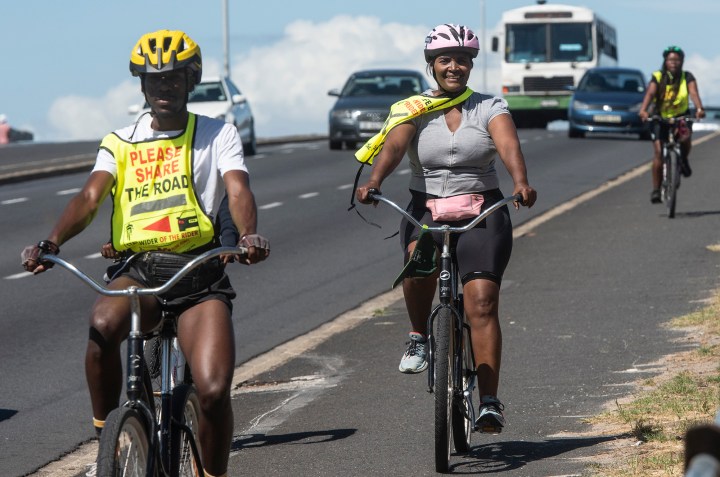
While the idea of introducing cycle lanes in the Cape Flats has been welcomed, mobility activists have raised concerns about the safety of cyclists and pedestrians.
The City of Cape Town is working on proposed cycle lanes in the communities of Khayelitsha and Mitchells Plain, which it says will have a significant impact on improving road safety.
Cycling activists, however, raised some red flags during the public participation process. They say the proposed designs pose risks for cyclists and pedestrians and will not achieve the project’s goals of significantly “improving road safety for both pedestrians and cyclists”.
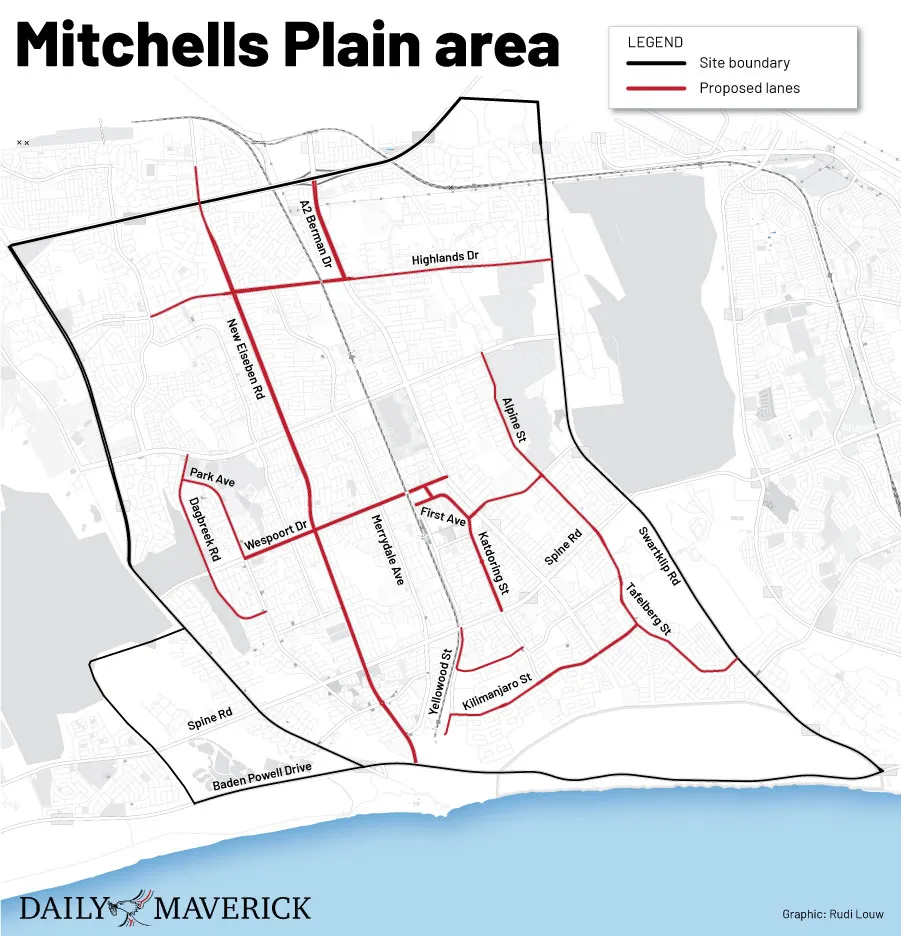
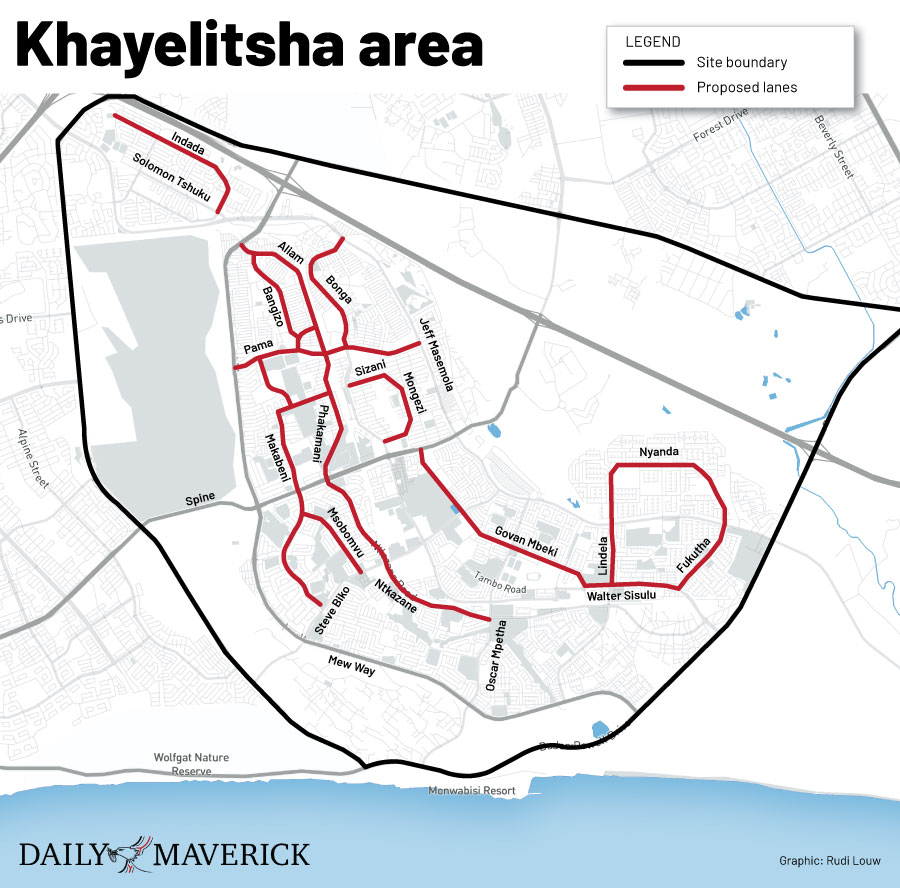
While public participation closed for the proposed cycle lanes in Mitchells Plain, the public has until 18 June 2023 to make submissions for the proposed lanes in Khayelitsha.
Cycling lanes are also on the cards for Heideveld, with residents having until 5 July to comment. The city has so far shared only the streets where the infrastructure will be introduced.
The draft designs show that the municipality either plans to just paint existing roads (if they are wide enough) with green paint to show designated areas for cyclists or slightly extend the roads and then paint them.
Where the existing width of the road is to be maintained, the municipality will simply demarcate a cycle lane with paint, thus narrowing the road.
The designs offer no protective barriers for cyclists and motorists can decide to ignore the painted lanes and drive over them.
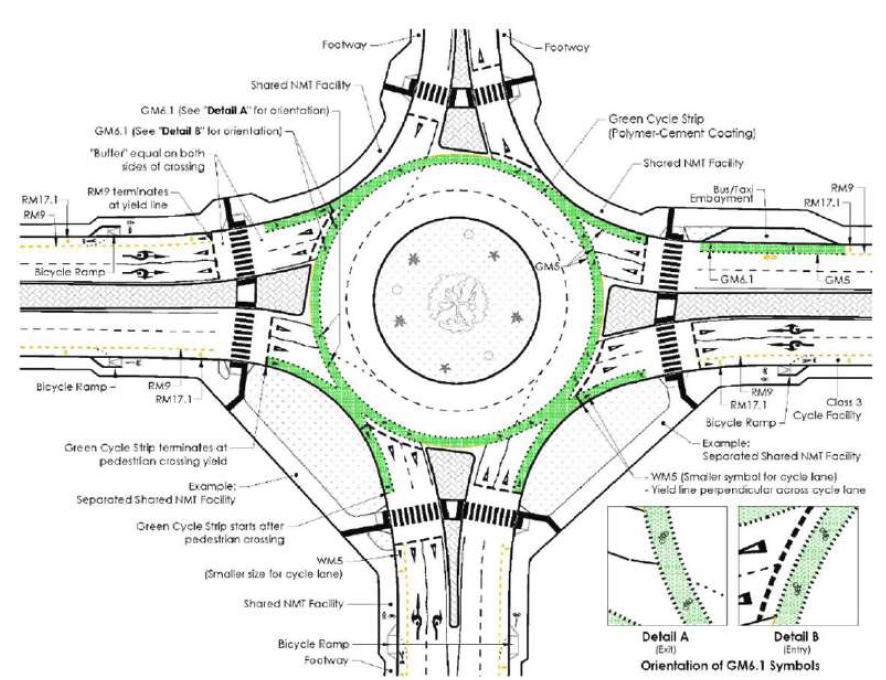
Draft plans indicate lanes will painted green as a designated area for cyclists, with no extra protection. (Image: Supplied)
While the municipality says the new infrastructure will have a significant impact on improving road safety for both pedestrians and cyclists, research and mobility activists have raised concerns.
“We know what will happen when there is no separate barrier, and it only requires the city to make small changes like adding a delineator kerb to turn the class 3 and 4 cycling facilities into a class 2 facility,” Roland Postma, co-director for the Active Mobility Forum, said.
Class 3 and 4 cycling facilities are cycle lanes marked with paint, while class 2 facilities feature a barrier separating the road and cycling lanes.
Examples of safe cycling lanes include the Liesbeek cycle lane, the Salt River cycling lane, which is for the exclusive use of cyclists and pedestrians, the Cycleway in Milnerton and the N1 Cycleway.
Sindile Mavundla, the self-appointed “Bicycle Mayor” of Cape Town and a cyclist from Khayelitsha, said safe pedestrian and cycling infrastructures went hand in hand and were key investments to enable economic growth and to make short and last-mile trips to public transport and schools safer.
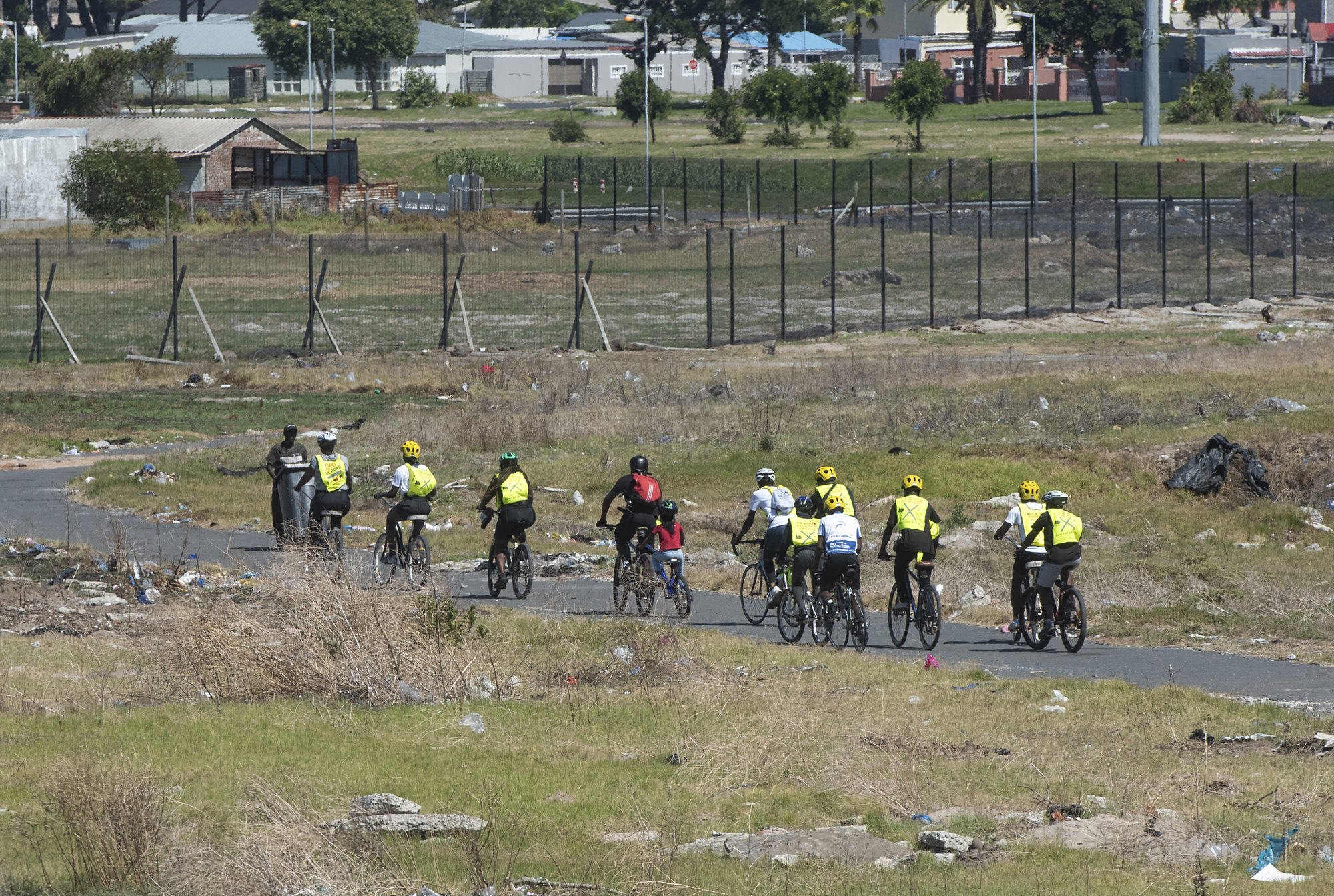
Cyclists after crossing the N2 from Langa enter Bridgetown in Cape Town, South Africa on 24 February 2023. (Photo: Brenton Geach)
“We are not asking for a lot here and we’d like to see some form of barrier on all roads for cyclists like a delineator curb; traffic calming near the circle like speed bumps; reduce car lanes; traffic calming near pedestrian crossings; longer waiting times for pedestrians at both robots and signalised crossings and banning left or right turn when pedestrians have a green light.”
The City of Cape Town’s Mayoral Committee Member for Urban Mobility, Rob Quintas, said that ideally, one would want to separate infrastructure (cycle lanes) meant for cyclists, from the road. However, in most instances, the road reserve was not wide enough to accommodate a cycle lane separated from the road surface used by vehicles.
“This is why the city uses clearly demarcated lanes – these are painted green – to indicate that the space/lane is reserved for cyclists, and to make drivers aware of this. In most cases our road network does not allow for demarcations on the road surface – as these may impede the movement of traffic at signalised intersections, and where traffic from side roads joins bigger arterial routes.”
Another concern about the plans is that there are no designated areas where cyclists can safely secure their bicycles. There is bicycle parking in the city centre at the Civic Centre, on Greenmarket Square, Church Square, along Waterkant Street and outside Portside on Bree Street.
A 13-year study of a dozen cities by researchers at the University of Colorado Denver and the University of New Mexico discovered cities with protected and separated bike lanes experienced a drastic decline in fatalities for all users of the road.
Recently, Daily Maverick joined the Active Mobility Forum’s cycling initiative to ride from Langa to the Cape Town CBD to highlight the need for infrastructure that enables safe cycling and an inclusive transport system across the city.
Read more in Daily Maverick: Hell on a bike – what it’s really like cycling from Langa to Cape Town
Cycling to the CBD comes with risks: there is no infrastructure for cycling, and cyclists are forced to share the road with vehicle drivers who are sometimes not mindful of manual two-wheeled road users, and the painted lanes that the city plans to introduce in Gugulethu, Khayelitsha and Mitchells Plain will not protect cyclists from the danger.
Quintas said that dedicated, separate cycling infrastructure would require the city, in some cases, to compromise on space for wheelchairs and prams, adding that non-motorised transport is broader than just cycle lanes.
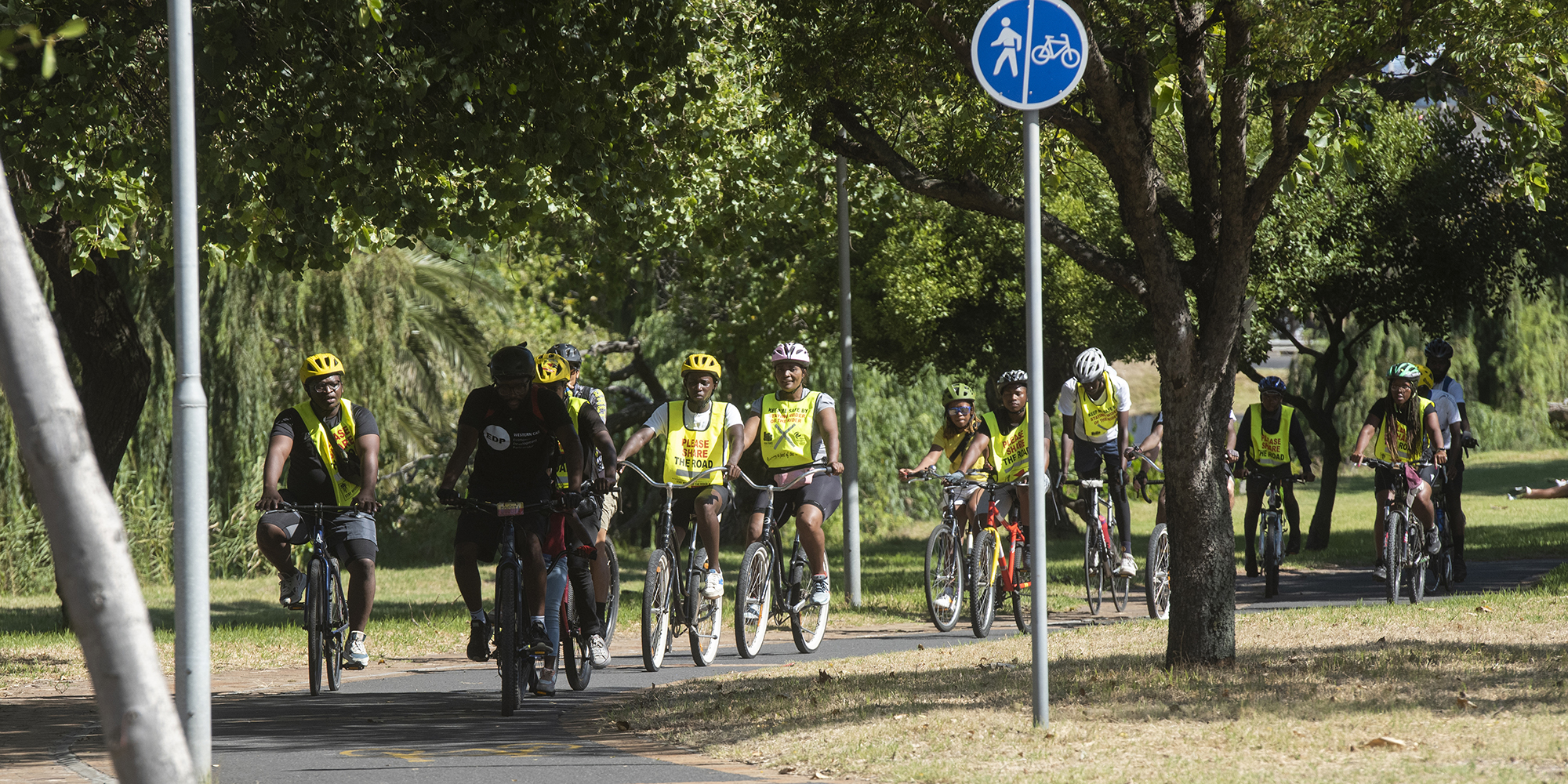
Cyclists along the cycle path at Liesbeek near Hartleyvale stadium in Cape Town, South Africa on 24 February 2023. (Photo: Brenton Geach)
“That said, we also need drivers to change their behaviour and attitude towards cyclists in general. Some drivers are of the opinion that roads are for the exclusive use of vehicles only. This is not true.”
Postma disputes Quintas’s evaluation that the roads would need to be wider to enable extensions to cycle lanes. Along New Eisleben and Spine Road, for instance, the road reserve (boundary to boundary) averages between 30-40m. Assuming a generous double-lane, two-way road (3.3mx4), with shoulders (2.0mx2) and a median (5m), the space required for two-way flow is about 22.2m.
This leaves adequate space (7.8m) for pedestrians and cyclists assuming a 30m total road reserve, according to Postma.
“Options do exist to either widen the current pedestrian sidewalk to accommodate cyclists or place tactical bollards in the current shoulder and remake the car traffic lanes accordingly.”
Responding to this, Quintas said all comments, inputs, suggestions and recommendations provided by interested and affected parties would be considered as part of the ongoing public participation process.
“Our plea for Urban Mobility extends beyond cycling safety to prioritising the wellbeing of pedestrians, who form the majority in Mitchells Plain,” Postma said.
“While the proposed upgrades demonstrate progress with universal basic design, much of it regrettably adheres to outdated engineering standards. Such an approach falls short of our primary objective: improving the safety of the area. To truly enhance safety, these upgrades must really put pedestrians first, and cars last. The current proposal still maintains wide and dangerous roads, big and wide intersections that put pedestrians last and pedestrian crossings still puts cars first and pedestrians last,” he said.
Although he was not explicit, MEC for Mobility Ricardo Mackenzie expressed concerns about the proposed lanes. “After doing a walkabout myself in the area (Mitchells Plain) and reviewing all the plans, I believe it is crucial that the people who will use the infrastructure – cyclists and pedestrians – must be as protected as possible.
“On some of these roads we see both high-volume and high-speed motor traffic, and we must also take into account the realities of driver behaviour. I trust the public participation process has enabled community members to give their valuable input into the project. I am also confident that the City of Cape Town will consider all views, enabling them to make a decision on how the project develops.”
The public has until 5 July to comment on the proposed cycling lanes for Heideveld and until 18 June to comment on the proposal for Khayelitsha. DM


















Paint isn’t anything more than a suggestion. South African drivers, whether they’re at the wheel of a minibus taxi or a BMW, tend to ignore rules and suggestions; without putting up at least a short kerb, painted cycle lanes will have little to no effect, and will just be another part of the road, or will be used to park and stop.
It’s good that the City is recognizing the idea of cycling but they need to give it teeth, or it’ll be a concept on paper (tarmac?) alone.
Correct, but if roads are wide enough and there are traffic calming/slowing measures in key intersections, then it could work. The issue is also distances and the Cape weather. Winter isn’t great for cycling and the wind pomps in summer.
In France the cycle lanes are set back from the roads and there is no chance of cars driving on them.
We may not have that much space here, but you need to have a raised kerb between the road and cycle lane to ensure cars don’t use the lane or block it by parking on it.